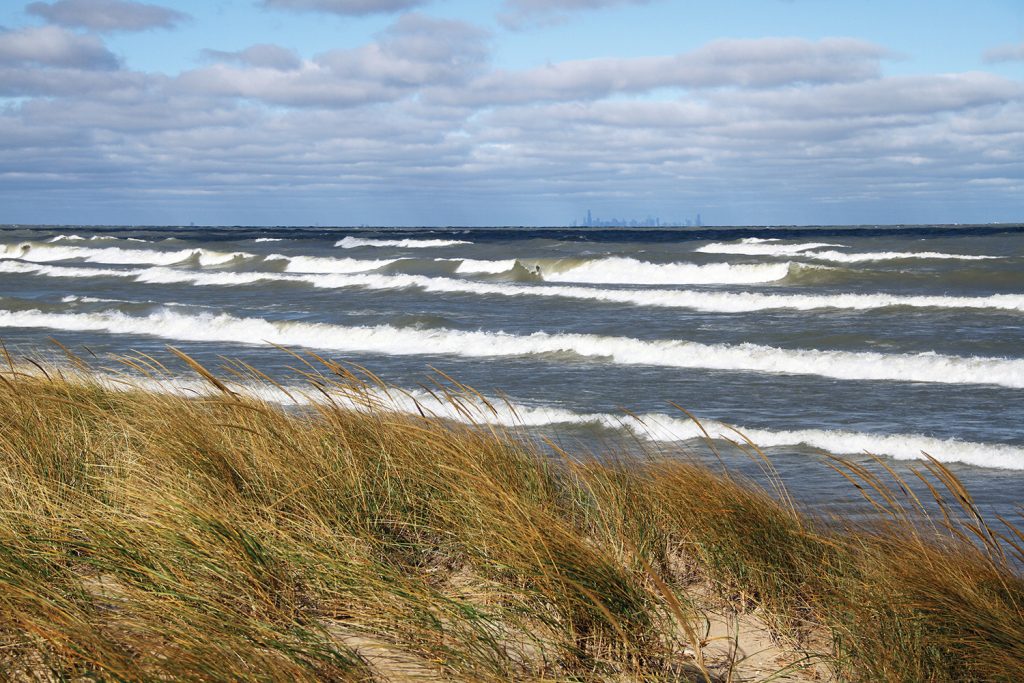
Porter County sits in the middle of the three Hoosier counties touching Lake Michigan. This unique geographical location gives the county its amazing “otherworldly” landscape and ecosystem that is the Indiana Dunes.
The lakeshore offers some of the most unspoiled natural areas in the state and is home to Indiana’s only “National Park.”
Indiana Dunes National Park hugs 15 miles of the southern shore of Lake Michigan and offers beaches, sand dunes, bogs, marshes, swamps, prairies, rivers, oak savannas, and woodland forests. The park is also noted for its singing sands. More than 350 species of birds have been observed in the park, and it has one of the most diverse plant communities of any unit in the U.S. National Park System. The park is home to more than 1,100 native plants.
Indiana Dunes was established by Congress in 1966 as “Indiana Dunes National Lakeshore” to preserve and protect the area’s unique natural habitat. It became the nation’s 61st “National Park” quietly in 2019. While the change in name didn’t alter how the National Park Service cared for and maintained the 15,000 acres of property, it did elevate the Dunes in the eyes of the public. As Indiana’s only National Park, it now is listed among the likes of Acadia, Yellowstone, Grand Canyon and Great Smoky Mountains.
Before the change in name and the onset of the pandemic, the National Lakeshore, and its neighboring Indiana Dunes State Park, received 3.6 million visitors a year, the equivalent of the seventh most-visited national park, behind Yellowstone. Indiana’s top tourist attraction, the Dunes pulls heavily from nearby Chicago.
The park also features the 1822 Joseph Bailly Homestead. Bailly was a fur trader on Lake Michigan. The Chellberg Farm, established in 1869, is also an historical attraction.
Indiana Dunes State Park is also located on the lakeshore and is surrounded by the National Park. The park provides opportunities for bird watching, camping, hiking, fishing, swimming, cycling, horseback riding, and cross-country skiing.
The park also features the historic Indiana Dunes State Park Bathhouse and Pavilion on the beach.
Visitors should also note that the National Park and the State Park operate separately and entrance for one doesn’t provide entrance to the other. The NPS began requiring entrance fees in April. A non-commercial family-sized vehicle is $25. A walk- or bike-in pass is $15.



